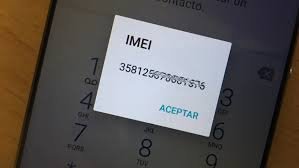Every smartphone has its own digital fingerprint, and it’s called an IMEI number. While most users rarely think about it, this identifier plays a vital role in how devices connect, how they can be protected, and how safe it is to purchase a phone. Understanding the IMEI helps smartphone owners avoid risks and make smarter decisions.
Understanding IMEI: The Basics
IMEI stands for International Mobile Equipment Identity. It is a 15-digit number that serves as a unique identifier for every mobile device. No two phones share the same IMEI, even if they are the same brand and model.
You can usually find this number in the About Phone section of your device’s settings, by simply dialing *#06#, or on the original box and warranty card.
Think of it as a passport number for your smartphone - a unique code that allows the device to be recognized and registered anywhere in the world.
Why IMEI Matters for Every Smartphone User
The IMEI number is more than just a random sequence of digits; it has practical uses that directly affect millions of smartphone owners around the world:
- Device security: If a phone is lost or stolen, carriers and authorities can block it using its IMEI number. Once blacklisted, the device cannot be used on most mobile networks, which makes it far less valuable to thieves and helps discourage phone theft.
- Network identification: Mobile operators rely on IMEIs to recognize and authenticate devices on their networks. This ensures that only legitimate devices connect, supporting both performance and security.
- Device information: Each IMEI is tied to detailed technical information about the phone, such as the brand, model, manufacturing date, and even the region of production. This data helps users verify that a phone matches the specifications being advertised.
- Warranty and support: In many cases, manufacturers and retailers request the IMEI to confirm warranty eligibility, track repairs, or provide technical support.
Without IMEIs, mobile networks would not be able to operate securely, and users would have a much harder time protecting their devices or proving ownership. This small number is an essential building block of the entire mobile ecosystem.
How to Check IMEI on Your Device
Verifying the IMEI of your device is quick and simple, and there are several ways to do it depending on your situation:
- *Dial #06# - this universal code works on nearly all smartphones. Simply open the dialer, enter *#06#, and the IMEI number will instantly appear on the screen.
- Check in the settings menu – go to Settings → About Phone → Status → IMEI information. This option is useful if you want to view additional device details at the same time.
- Look on the packaging - most manufacturers print the IMEI on a label attached to the box. Keeping the original packaging can help if you need to provide the number later.
- Inspect the SIM tray or back cover - on certain devices, the IMEI is physically printed on the SIM card tray or engraved under the back cover.
Having multiple options ensures you can always retrieve the IMEI, whether you still have the original packaging or not. Keeping a record of this number is also a smart idea, as it may be required by your carrier or insurance provider if your phone is lost or stolen. For an even safer experience, you can also use online tools such as https://imei.best/
to instantly check the status of your device.
IMEI and Second-Hand Phones
Buying a second-hand phone can be a smart way to save money, but it also carries risks. A device might be stolen, blacklisted, or locked by a carrier.
Checking the IMEI before making a purchase helps:
- Confirm that the phone is not reported stolen.
- Verify if it’s carrier-locked or unlocked.
- Ensure you are buying a legitimate, safe device.
That’s why checking the IMEI before completing a purchase is so important. It helps confirm that the device is not reported as stolen, ensures it is not locked to a specific carrier, and verifies that you are buying a legitimate phone. Taking this step protects you from scams and prevents unpleasant surprises after the deal is done.
Protecting Yourself with IMEI Checks
Smartphone fraud has become more sophisticated, and many scams today involve resold or blocked devices. Some phones turn out to be blacklisted and cannot connect to mobile networks, while others are carrier-locked but sold as if they were fully unlocked. In some cases, buyers end up with stolen phones that may work at first but later become blocked after being reported.
Performing an IMEI check before purchasing a phone provides peace of mind and helps avoid costly mistakes. It is a simple step that protects your investment and ensures you are not unknowingly supporting illegal markets.
The IMEI number is an essential part of every smartphone. It ensures security, supports network operations, and protects users when buying or selling devices. By learning what an IMEI is and knowing how to check it, smartphone owners can avoid fraud, safeguard their devices, and make informed decisions in today’s mobile-driven world.
 Online Clock
Online Clock